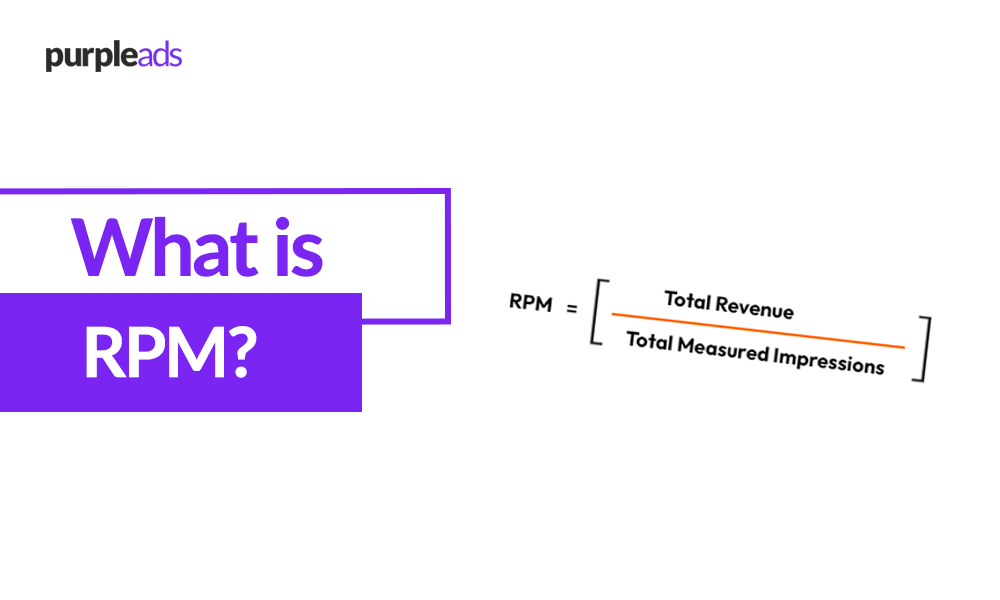Introduction to RPM
RPM, or revenue per thousand impressions, is a key metric used in the advertising industry to measure the effectiveness of ad campaigns. It is calculated by dividing the total revenue generated by an ad campaign by the number of impressions the ad received, and then multiplying the result by 1000. In other words, RPM represents the amount of money that an advertiser earns for every 1000 impressions their ad receives.
As digital advertising continues to grow in popularity, understanding and optimizing RPM has become increasingly important for advertisers looking to get the most out of their ad spend. In this article, we’ll delve into the details of RPM and explore the various factors that can affect its value.
How RPM is Calculated
As mentioned earlier, RPM is calculated by dividing the total revenue generated by an ad campaign by the number of impressions the ad received, and then multiplying the result by 1000. Let’s take a look at an example to better understand how this works.
Imagine that an advertiser runs an ad campaign on a website that reaches a total of 100,000 impressions. The campaign generates a total of $1000 in revenue. To calculate the RPM for this campaign, we would divide the total revenue ($1000) by the number of impressions (100,000) and multiply the result by 1000. This would give us an RPM of $10.
RPM = ($1000 / 100,000) * 1000 = $10
It’s important to note that RPM can be calculated for individual ads, ad campaigns, or even entire ad networks. Advertisers can use RPM to compare the effectiveness of different ad campaigns or ad networks, and to determine which ones are generating the most revenue per impression.
Factors That Affect RPM
There are several factors that can affect the RPM of an ad campaign. Some of the most important ones include:
- Target audience: The demographics and interests of the target audience can have a big impact on RPM. For example, an ad targeting a highly specific and narrow audience is likely to have a higher RPM than an ad targeting a broad, general audience.
- Ad placement: The placement of an ad can also affect its RPM. Ads that are placed in more prominent or visible locations, such as the top of a webpage or in the middle of content, are likely to have a higher RPM than ads placed in less visible locations, such as the sidebar or footer of a webpage.
- Ad format: The format of an ad can also impact its RPM. Some ad formats, such as video ads or interstitial ads, are more intrusive and may have a higher RPM as a result. Other ad formats, such as banner ads or native ads, are less intrusive and may have a lower RPM.
- Ad content: The content of an ad can also play a role in determining its RPM. Ads that are relevant and useful to the target audience are more likely to generate higher RPMs than ads that are irrelevant or spammy.
- Competition: The level of competition in the ad market can also affect RPM. In markets with high levels of competition, advertisers may have to bid higher to secure ad placements, which can ultimately lead to lower RPMs.
Using RPM to Optimize Ad Spend
Advertisers can use RPM to optimize their ad spend and get the most out of their advertising budget. By understanding which factors affect RPM and how to optimize them, advertisers can increase the effectiveness of their ad campaigns and generate more revenue per impression.
One way to optimize RPM is by targeting a specific, narrow audience. By targeting a specific group of people with specific interests, advertisers can increase the relevance of their ads and ultimately generate higher RPMs.
Another way to optimize RPM is by selecting the right ad placement. Advertisers should aim to place their ads in prominent, visible locations on websites or other platforms to increase the chances of them being seen and clicked on. In addition, advertisers can experiment with different ad formats to determine which ones work best for their campaigns and target audience.
Advertisers can also optimize RPM by ensuring that their ad content is relevant and useful to the target audience. By creating compelling, high-quality ads that are tailored to the interests and needs of the target audience, advertisers can increase the chances of their ads being engaged with and ultimately generate higher RPMs.
Finally, advertisers can optimize RPM by keeping an eye on competition in the ad market. In markets with high levels of competition, advertisers may need to bid higher to secure ad placements, which can lead to lower RPMs. To mitigate this, advertisers can consider targeting less competitive ad markets or using alternative ad networks that may have lower competition.
Conclusion
RPM is a key metric for measuring the effectiveness of ad campaigns and is critical for advertisers looking to get the most out of their ad spend. By understanding how RPM is calculated and the various factors that can affect its value, advertisers can optimize their ad campaigns and increase their revenue per impression. Whether you’re new to advertising or an experienced pro, keeping an eye on RPM and using it to optimize your ad spend can help you achieve better results and drive more value from your advertising efforts.

